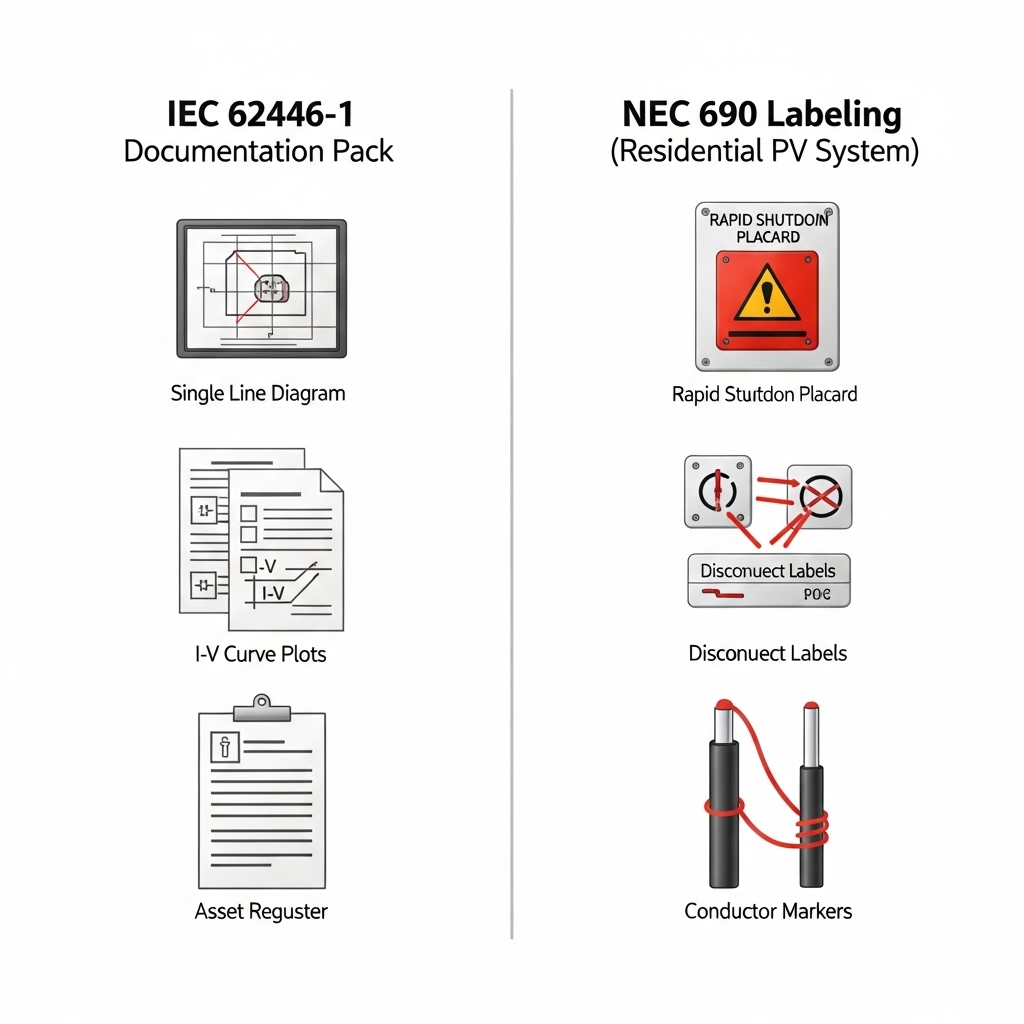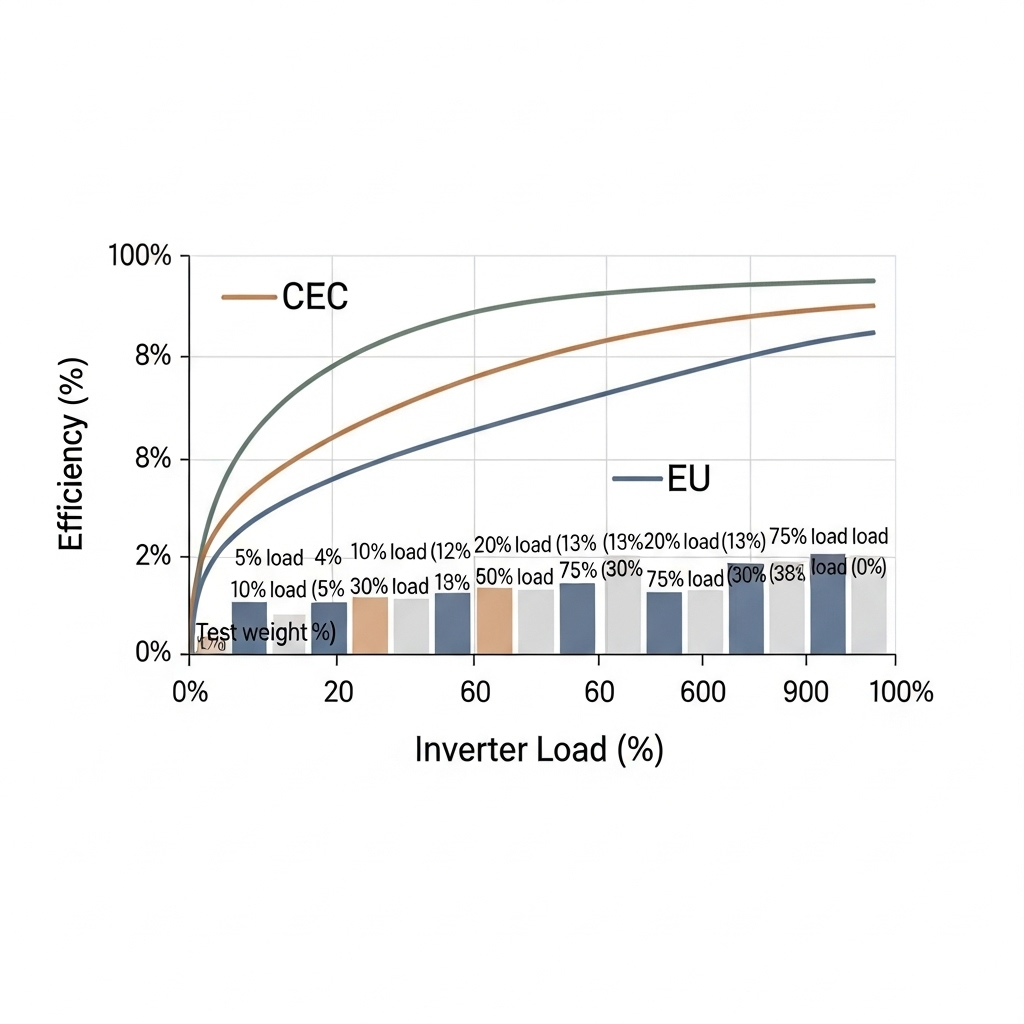I'll never forget the sinking feeling of watching a fire inspector place a stop-work order on a major project. The reason? The signage on our Energy Storage System (ESS) room was missing two key details. It was a costly lesson in an often-overlooked area: proper signage is not just a final detail; it's a critical safety and compliance gateway. It's the first thing first responders and inspectors see, and it sets the tone for the entire site visit.
Over the years, I've developed a straightforward system to create signs that are clear, durable, and, most importantly, sail through plan reviews and field inspections. I'm sharing that process with you to help you avoid the delays and rework that I had to learn the hard way.

What Inspectors and First Responders Actually Need to See
The two main rulebooks are **NFPA 855**, which governs the ESS installation itself, and the **International Fire Code (IFC)**, which handles overall site safety. Think of it this way: NFPA 855 tells you what information is needed, and the IFC ensures it's presented clearly as a hazard communication sign. When a firefighter arrives at 2 a.m., they don't have time to read a manual. They need to know three things in three seconds: What is in this room? What are the biggest dangers? And how do I shut it off?
This need for speed is why clear labeling is so critical. With battery deployment growing so fast—something federal agencies like the EIA track closely—we have a responsibility to make these sites universally understood and safe for emergency crews.
My Go-To ESS Door Signage Template
After dozens of projects, I've landed on a template that includes everything the Authority Having Jurisdiction (AHJ) wants to see, without clutter. I recommend printing this on a single, durable placard at every entrance.
- Header: Start with 'ENERGY STORAGE SYSTEM' and then the specific chemistry. Be precise: 'LITHIUM-ION (LFP)' is much better than a generic marketing term.
- System Size: List the total energy capacity in kWh and the nominal DC voltage. This gives responders an immediate sense of the system's scale.
- Key Hazards: Be direct. 'Stored Electrical Energy,' 'Thermal Incident Risk,' or 'Corrosive Electrolyte' are the kinds of phrases they look for.
- Shutoff Locations: This is crucial. Use simple language and arrows. Example: 'ESS DC Disconnect -> (Inside, Right of Door).'
- Fire Systems: Note the status of fire detection and suppression (e.g., 'Smoke Detection & Clean Agent Suppression').
- Emergency Contact: A 24/7 phone number for site security or facilities management is non-negotiable.
- QR Code: This is a powerful supplement. Link it to a small, curated digital pack with the one-line diagram, shutdown procedures, and Safety Data Sheets (SDS).
A Quick Note on Materials and Placement
Trust me on this: don't use a cheap sticker. I use rigid aluminum or UV-stable plastic plates mounted with screws, not just adhesive. Place it at eye level near the door handle. For the lettering, I use a high-contrast block font, at least a half-inch tall. The reason isn't just code—it's so someone can read it from down a hallway, possibly through smoke.
My 6-Step Workflow for Signs That Never Fail Inspection
This is the exact process my team follows to ensure we get it right every time.
- Verify the Facts: We confirm the final installed capacity (kWh), voltage, and chemistry against the commissioning records. Never use the design specs; use what was actually installed.
- Draft the Sign: We fill out our standard template with the verified information.
- Talk to the AHJ: This is the most important step. We send the draft sign to the local fire prevention office *before* fabrication and ask, "Does this meet your expectations?" They often have specific preferences that aren't written in the code. This conversation alone can save weeks.
- Do a Paper Test: We print a full-size paper version and tape it to the door. Then we walk down the hall and approach from different angles. Is it legible? Are the arrows pointing the right way? This simple test has saved me from re-ordering expensive signs more than once.
- Fabricate and Install: Once the design is locked, we order the durable sign and install it. We also ensure the QR code links to a permanent, stable URL that won't change.
- Plan for the Future: We assign ownership for updating the sign. If the battery capacity is ever upgraded, the sign must be replaced immediately. An out-of-date sign is a guaranteed inspection failure.
Why Consistency is Your Best Friend
The golden rule of compliance is consistency. The terminology on your sign must match the labels on your equipment and the language in your one-line diagrams. If your sign says the disconnect is in 'MSB-A,' the panel better have a big, clear 'MSB-A' label on it. This simple alignment shows inspectors that you are professional and detail-oriented, which builds immense trust and makes the whole process smoother.
Ultimately, great signage is about respect—respect for the first responders who might have to enter that room under the worst conditions, and respect for the inspection process that keeps our projects and communities safe.





Leave a comment
All comments are moderated before being published.
This site is protected by hCaptcha and the hCaptcha Privacy Policy and Terms of Service apply.